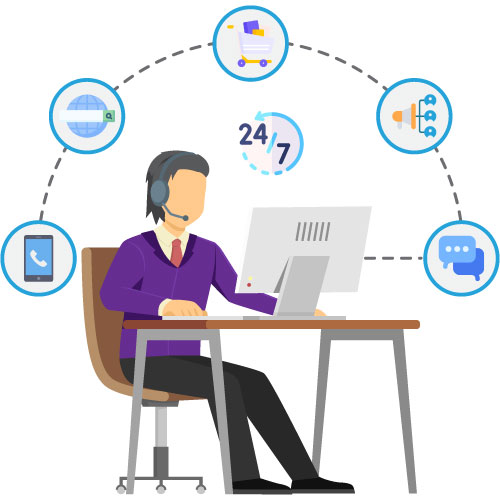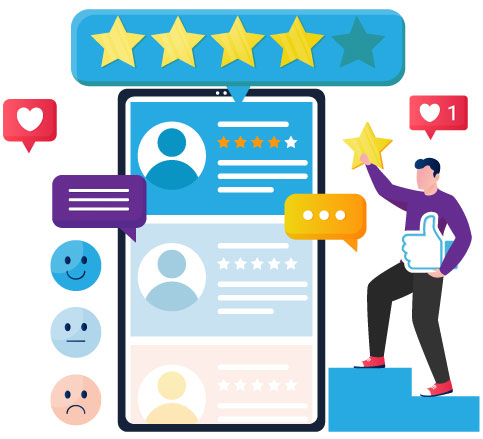Nowadays, everything is available online, from a toothbrush to LED TV. E-commerce has become a new trend and is the future. However, starting an online business is not everyone’s cup of tea. It requires immense hard work and a strong business sense. It involves product sourcing as well.
Numerous e-commerce websites available today, like Amazon, Flipkart, Paytm, Snapdeal, Flipkart, Myntra, etc, have taken over the internet.
People are always searching for new products and can buy online from any nook and corner of the world. There are numerous logistic services available today which have made it very easy to deliver products and services using Microsoft Dynamics CRM consultants to different locations. For example if you are an ecommerce seller or doing Amazon FBA you can make use of Helium 10 Deals. Helium 10 provides you with the trending products people are searching for.
There are many advantages of e-commerce, but along with that, there are some limitations of eCommerce as well.
Contents
Scope of E-Commerce- The Upcoming Trends
Many technological advancements help e-commerce businesses to meet their shoppers’ purchasing needs with speed and convenience. These ecommerce development solutions help customers avail themselves of anything at the click of their mouse. If you’re ready to form an ecommerce business but feel intimidated by the red tape, there are business formation companies (for example, ZenBusiness) that can help you set up an LLC or corporation, provide registered agent services, help with accounting tasks, and more.
So, if you miss out on these, you’ll lose new business opportunities. So, here are the technology trends that you should monitor in 2025.
1. Omnichannel presence and support

Today, people carry out research, consideration, and purchase across multiple channels. So, they expect seamless across these channels and devices. E-commerce businesses should therefore make themselves omnichannel-ready. You need to provide customers with the content they want at the time they want, and the place they want it. For example if you are starting an online store site, make sure to choose for the best ecommerce plugin that allows you to integrate seamlessly with other
So, you need to adopt some of the latest technologies that perform well in an interconnected buyer or user journey to tap into the scope of e-commerce. Some of these include-
- Video Chat that lets your brand converse face-to-face with customers.
- Co-browsing- a visual engagement system that simultaneously brings together your customers and agents on the same page so that the agents can smoothly guide them through complicated procedures.
- Screen Sharing- an interactive technique where your customers can share their screen with your agents so that their issues with completing transactions, filling forms, etc. can be resolved.
- Document Interaction- a platform where your agents can safely and securely interact with your customers’ documents.
- Network Infrastructure – While the above technologies improve customer experience, they rely heavily on a robust network infrastructure. A strong understanding of networking principles, like the one gained through Cisco CCNA Exam Dumps and go ahead for Cisco CCNA certification.
2. Customer experience

Customer experience, both in-store and online, matters a lot for the success of your e-commerce business, as it directly affects brand loyalty. No wonder it’s increasingly becoming one of the best digital marketing trend.
You can ensure a good customer experience online in the following ways.
- Ensure that your site loads fast. Today people expect sites to load within 3 seconds. If not, they lose patience and move on to a fast-loading site.
- Take care that your site navigation is simple and easy. User testing your site can help you identify issues that people face in navigating your site. This will help you create a customer-friendly experience.
- A/B test your messaging, product page flow, info asked for during the checkout, checkout process length, and call to action. You can also improve your SEO with A/B testing.
- Post only high-quality product images. People seek high-resolution images to determine whether or not to make a purchase.
- Provide apt and honest product descriptions. This will help build your customers’ trust. One of the most common e-commerce marketing mistakes is relying on manufacturers’ descriptions. So, avoid it and post your own clear, professional description for each product in your catalog.
- Integrate educational content into your site. People make purchases based on blog content.
- Provide ways for customers to share their product reviews and ratings. This not only improves your credibility but also allows other customers to make informed buying decisions.
3. High levels of personalization

The biggest trend in e-commerce now is personalization. People expect a shopping experience that is highly relevant to them based on their personal preferences. Studies say that over 78% of customers ignore impersonalized offers. So, personalize your customer interactions based on their browsing behavior, past purchases, and preferences specified.
Employing Artificial Intelligence (AI) and machine learning (ML) can capture almost all user actions online, store those, and derive valuable insights from those. This lets businesses know customer behavior patterns, expectations, desires, and more.
This in turn creates endless possibilities (like upselling, cross-selling, etc.) for e-commerce businesses. Such smart personalization can bring in a 20 fold return, says a study by Liveclicker, a digital marketing solutions provider.
4. Mobile-friendliness

Today, many people use their smartphones to shop online. Online purchases made using smartphones in 2021 are $345 billion (Source: Statista).
People increasingly resort to using their mobile phones for making purchases as these are more convenient than desktops. So, the scope of e-commerce businesses is largely a mobile-first approach. Those that haven’t made their e-stores mobile-friendly would be losing a lot of business opportunities.
A big part of making your e-store website mobile-friendly is ensuring its responsiveness, especially when you’re looking to build an ecommerce website. Responsiveness let users to view and interact with elements without having to manipulate the view.
They need not resize, scroll, zoom, or pan their screen. Your site’s elements will automatically adjust and rearrange as per the screen of the device on which it is viewed. Hence, your customers will enjoy a good UX at your e-commerce site.
Another aspect of mobile-friendliness is synchronization between your mobile and desktop site. That is, the actions that your customer has taken on your desktop site should reflect on the mobile site, and vice versa.
For instance, if she has added some items to her cart on the desktop, the info should update on the mobile. This way, there should be a seamless shopping experience across devices.
5. Image recognition turned product recognition

The recently introduced image recognition functionality in smartphones has been extended to e-commerce as well. Some of the well-performing e-commerce businesses are already tapping into its immense potential. It’s used to recognize products and items in an image and pick them out from its vast catalogs.
People can now present the scanned image or photograph of the product they’re looking for to an e-store. The image recognition functionality incorporated will immediately scan through all of its products to find matches. This is especially highly useful in the clothing sector.
So, this trend will soon become the mainstream as people are finding this useful technology an increasingly indispensable feature in their shopping.
Some limitations of eCommerce
1. Security

This is one of the most common issues that many ecommerce leads businesses and customers face.
This may lead to numerous fraudulent activities and threaten the business. Also, many businesses, especially those with contact center operations, need to save various customer information like customer’s name, address, contact number, email id, age, etc. This requires a huge investment to secure the data, ensuring it is not misused or accessed by unauthorized parties.
For e-commerce businesses in the health sector, adhering to regulations is paramount, making a HIPAA compliance checklist an essential tool to ensure all customer data is handled in a secure, legal manner, protecting both the business and its customers from potential data breaches and legal issues.
Incorporating a Virtual Phone Number for e-commerce Business can further enhance security and communication, ensuring sensitive information is handled with utmost care and confidentiality.
2. Employee cost
Employee cost is also a limitation of e-commerce business. For any business, whether online or offline, having dedicated employees is crucial. You need a professional team to execute different tasks and fulfil the organization’s objective.
Whether your startup is a small business or a big corporation, or you are running one of the top eCommerce platforms, you need employees to yield great results. Employee cost also includes remote work tax implications. Incorporating Microsoft AZ-104 Exam Dumps into this environment adds another layer of readiness, ensuring employees are equipped with the latest knowledge and skills to navigate the evolving landscape.
E-commerce businesses, in addition to operational challenges, often face limitations in financial planning and forecasting. Financial projections for ecommerce are therefore critical for ensuring sustainable growth and profitability. These projections help estimate future revenues and expenses, plan budgets effectively, and identify potential financial risks in advance.
3. Warehousing cost
This is also a limitation of e-commerce. E-commerce sellers must have a physical location or warehouse where they can store their products. This would help them manage their operations from a designated location. This cost of warehousing has to be borne by the business itself. These limitations or disadvantages must be thoroughly understood by anyone wanting to set up an online business. It is always a wise idea to do a SWOT Analysis and look for different resources that are easy to access.
The cost of storage will differ from location to location. It is always advisable to find a warehouse that doesn’t involve a high inventory cost. This is the reason why a majority of warehouses are located outside the city.
While managing e-commerce operations, overcoming warehousing limitations through optimizing e-commerce warehouse storage strategies can significantly enhance efficiency and reduce overhead costs.
Strategic warehouse management and leveraging WMS solution not only addresses the cost implications but also ensures that your e-commerce business stays ahead in fulfilling customer orders swiftly.
4. Marketing cost

Along with advertising costs, a business must incur additional costs in marketing its product. Social media, emails, search engines, etc, are some ways through which you can market your product easily and effectively.
Google, Yahoo, and various other search engines offer methods to effectively market your product and drive more traffic to your website. Every marketing channel differs in cost according to its popularity and reaches; hence marketing budget should be prepared accordingly. An input that Vietnamese coffee brand, Cafely, always factors in while deciding the marketing budget to promote its products.. With the rise of AI tools, there are also more cost-effective ways to market your business. This could range from AI copywriters, website builders, email writers, and more. The biggest challenge here is making sure to align these tools with your target customer and their needs.
5. Sales flow

A diminished sales flow can pose a great disadvantage to the business and thus acts as one of the limitations of eCommerce business. It is extremely important to have traffic on your website as it helps drive sales. Also, if your listing is not done properly, your sales will likely fall.
Proper advertising and sales promotion can be a great way to improve your sales initially. Hence you should always try to promote your product on varied platforms as any single platform may yield a good amount of sales flow for your business.
How marketing automation can expand eCommerce
Here are 5 ways how marketing automation can expand eCommerce:
- Personalized Customer Journeys: Craft targeted email campaigns and website experiences based on customer behavior and preferences. This increases engagement and conversion rates by showing customers products and offers relevant to their interests.
- Streamlined Workflows: Automate repetitive tasks like abandoned cart emails, welcome sequences, and post-purchase follow-ups. This frees up your team’s time to focus on more strategic initiatives while ensuring customers receive timely and personalized communication.
- Increased Efficiency & Scalability: Handle a higher volume of customers without sacrificing quality. Automated campaigns and workflows allow you to manage a growing audience effectively, saving time and resources.
- Data-Driven Decisions: Gain valuable insights into customer behavior through campaign performance data. This empowers you to refine your marketing strategies, optimize campaigns, and personalize experiences leading to higher ROI.
- Enhanced Customer Service & Retention: Utilize automated chatbots and support tools to provide 24/7 customer service and answer common queries. Prompt responses and personalized recommendations foster customer satisfaction and encourage repeat business.
Conclusion
A business can effectively leverage the scope and minimize the limitations of eCommerce if they have a proper business plan and good implementation strategies. Utilizing marketing automation software build specifically for ecommerce like NotifyVisitors an help you streamline your marketing efforts increase online visibility and overcome further limitations NotifyVisitors can be of great help to you. You can schedule a demo to learn about us.
FAQs
1. What is e-commerce?
E-commerce, also known as electronic commerce, refers to buying and selling products or conducting marketing activities online, usually over the internet.
2. Is e-commerce suitable for every business?
The answer is Yes! E-commerce is suitable for almost all business types, whether small scale or large scale. E-commerce stores will help your business grow better.
3. How to develop an e-commerce website?
E-commerce website development involves logo designing, hosting server, domain name, extensions, etc. A proper SEO is required to get a higher ranking. Thus a systematic approach is required to develop an effective e-commerce website.

























 Email
Email SMS
SMS Whatsapp
Whatsapp Web Push
Web Push App Push
App Push Popups
Popups Channel A/B Testing
Channel A/B Testing  Control groups Analysis
Control groups Analysis Frequency Capping
Frequency Capping Funnel Analysis
Funnel Analysis Cohort Analysis
Cohort Analysis RFM Analysis
RFM Analysis Signup Forms
Signup Forms Surveys
Surveys NPS
NPS Landing pages personalization
Landing pages personalization  Website A/B Testing
Website A/B Testing  PWA/TWA
PWA/TWA Heatmaps
Heatmaps Session Recording
Session Recording Wix
Wix Shopify
Shopify Magento
Magento Woocommerce
Woocommerce eCommerce D2C
eCommerce D2C  Mutual Funds
Mutual Funds Insurance
Insurance Lending
Lending  Recipes
Recipes  Product Updates
Product Updates App Marketplace
App Marketplace Academy
Academy

